
Guo, based in Tianjin, frequently travels to the island.[Photo provided by Xing Wen/China Daily]
When Ouyang Lijuan was a young girl in primary school, she longed for a proper school bag like her peers had.
However, growing up in a fisherman's family with three daughters on a remote island in Ningde, Southeast China's Fujian province, money was tight.
So, her mother sewed a shoulder bag for her daughter, using a common material in fishermen's households — fishing nets.
Carrying this unassuming handmade "school bag", Ouyang would face ridicule from her classmates, who would mock her and toss the bag around the classroom.
"Back then, I hoped the bag would break quickly. But ironically, while other students' decent bags wore out, mine remained intact," Ouyang recalls.
Today, the fishnet bag that Ouyang once wished to discard has inspired her to create a product that represents both the fishing culture and the essence of her island — a handcrafted tote bag, made from recycled materials, such as fishing nets, woven and patched with denim fabric salvaged from old clothes and adorned with shell decorations.
The bags are displayed in a coffee shop Ouyang runs on the island as cultural and creative products. The coffee shop was transformed from her grandmother's old brick house, which holds cherished childhood memories.
"When I was young, many elderly villagers lived in this area. When our parents went to sea to fish and there was no one to cook for us, the elderly would invite the kids over to share a meal," Ouyang recalls.
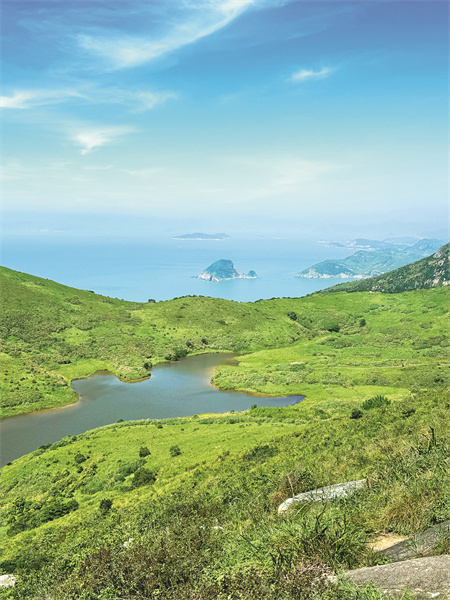
One of the island's many scenic views.[Photo provided by Xing Wen/China Daily]
The island, composed of 11 islets with a total area of 28.3 square kilometers, is called Yushan. It boasts a variety of landscapes, including mountains, lakes, meadows, seas, beaches and islands.
As native islanders, Ouyang's family sensed the potential of their hometown becoming a tourist destination 10 years ago.
"In 2014, we noticed that visitors often came to the island for hiking and camping. Some tourists couldn't find accommodation and were even willing to sleep on the floor in my house."
The following year, her family decided to renovate and expand their two-story home, turning it into the first guesthouse in the neighborhood.
"At first, many villagers didn't understand why we were putting in so much effort to build a house, when we could just buy one off the island with the money."
Gradually, as more islanders saw how Ouyang's family profited from the business, they too began transforming their homes into guesthouses.
With the increasing number of businesses on the island, Ouyang began to think about exploring new avenues.
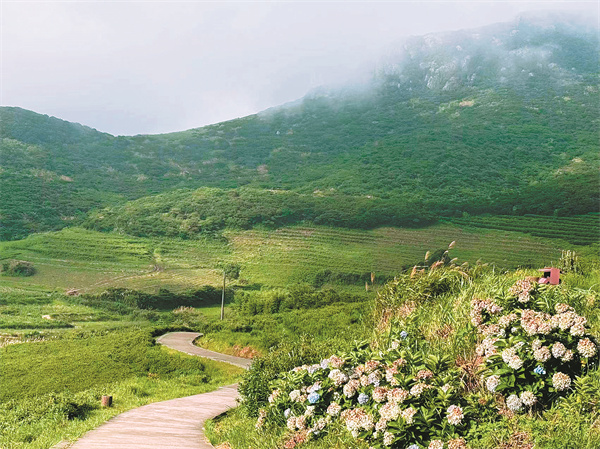
Mist shrouds the island's mountains.[Photo provided by Xing Wen/China Daily]
Just when she was pondering her entrepreneurial direction, a guest named Guo Jingshu arrived at their guesthouse and everything became clear.
Guo, now the executive director of a design company based in Tianjin, first visited the island in 2020.
She is also a graduate of Tsinghua University's School of Architecture.
The school of architecture set up its first rural vitalization station on Yushan Island in July 2018 as part of a nonprofit project aimed at leveraging resources from the university to boost development in the areas near these stations. While the project organizers implemented construction plans, local governments provided financial support. Every summer and winter break, Tsinghua University organized students to participate in rural planning and tourism development on the island.
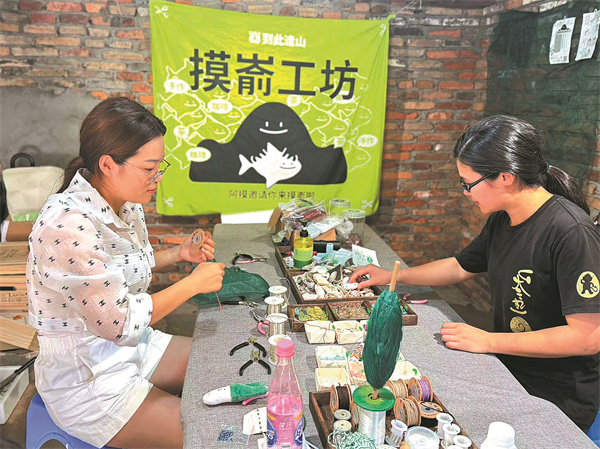
Entrepreneur Ouyang Lijuan (left) and architect Guo Jingshu make handicrafts using materials collected from nature at their workshop on Yushan Island.[Photo provided by Xing Wen/China Daily]
This led Guo to make her initial visit to the island, where, as a relatively experienced architect, she guided younger students.
Later, her company collaborated on various projects with the local government, which led to spending extended periods on the island.
"I gradually realized that without a deep understanding of the island, directly imposing external commercial models could feel out of place," Guo says. "The style of some guesthouses developed through government investment initiatives clashed with the natural essence of the island."
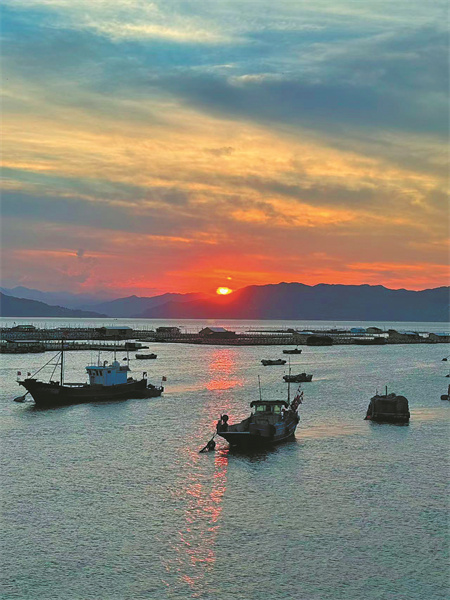
Fishing boats at anchor at close of day.[Photo provided by Xing Wen/China Daily]
To better understand the island and create architectural designs and cultural products that resonate with the local character, Guo spent six months on the island in 2022, residing at Ouyang's family guesthouse.
"I hope our professional design team can empower the residents, rather than giving them fully designed products," Guo says. "I believe it's important to involve the residents in the design process, with their input comprising over 70 percent, while we act as facilitators."
Thus, Guo and Ouyang found common ground.
Ouyang traveled to Guo's company in Tianjin where she spent a year learning about design and painting, as well as gaining insights into business operations.
Together, they initiated a cultural and creative brand named Daocifengshan last year. The products under this brand include the aforementioned fishnet bag, refrigerator magnets, maps, packed tea and various accessories crafted from shells and sea glass.
"Guo pulled me out of a difficult situation," says Ouyang. "Although I am a native familiar with many aspects of the island, integrating them into products requires systematic and professional knowledge. That's what Guo taught me."
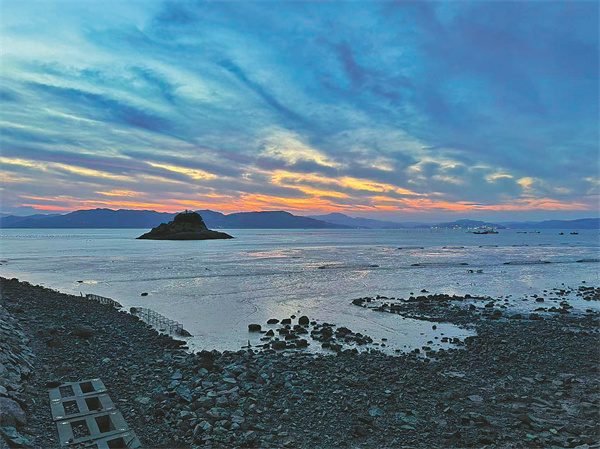
A setting sun graces Yushan Island, Ningde in Fujian province.[Photo provided by Xing Wen/China Daily]
For Guo, the collaboration with Ouyang has also been inspirational. "Ouyang is involved in product design and improvements, serving as the sales manager. She always provides timely feedback from sales to designers," Guo says.
As an architect who previously focused on "hard" projects like road beautification and building renovations, Guo has always desired to engage in "soft" work such as designing cultural and creative products. "The implementation timeline for architectural designs is long and complex but with cultural and creative designs, I can quickly bring ideas to life, which is satisfying," Guo explains.
These two women, close in age but with vastly different life experiences, frequently brainstorm new product designs and plan engaging cultural activities together.
Last year, Yushan Island welcomed 220,000 visitors, generating tourism revenue exceeding 120 million yuan ($16.5 million), a 21 percent year-on-year increase, according to the local culture and tourism department.
Ouyang's coffee shop has become a must-visit destination for many tourists.